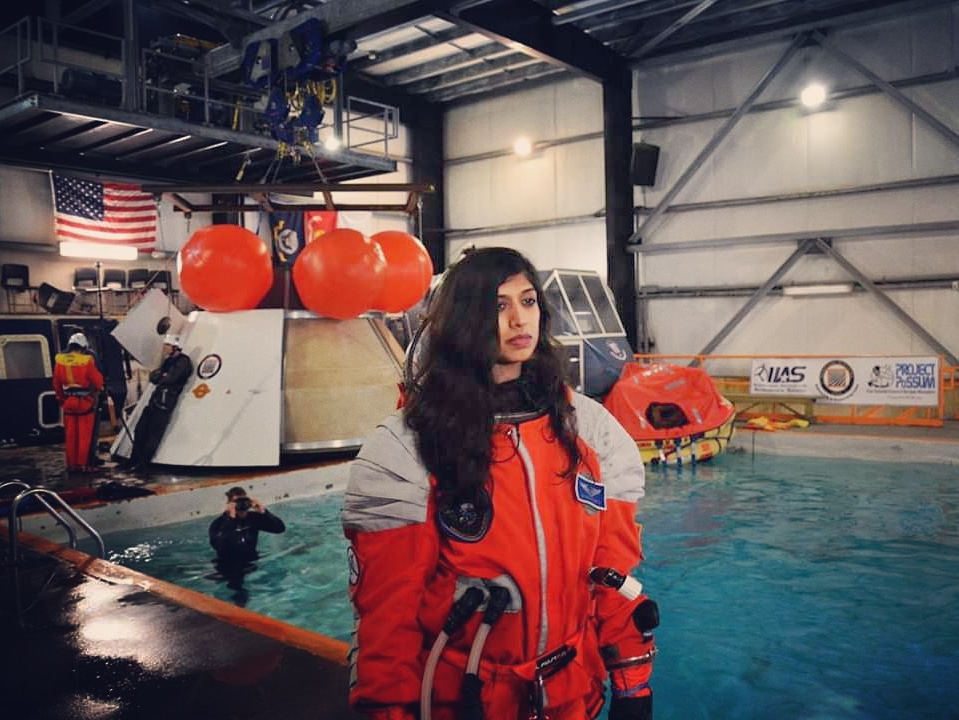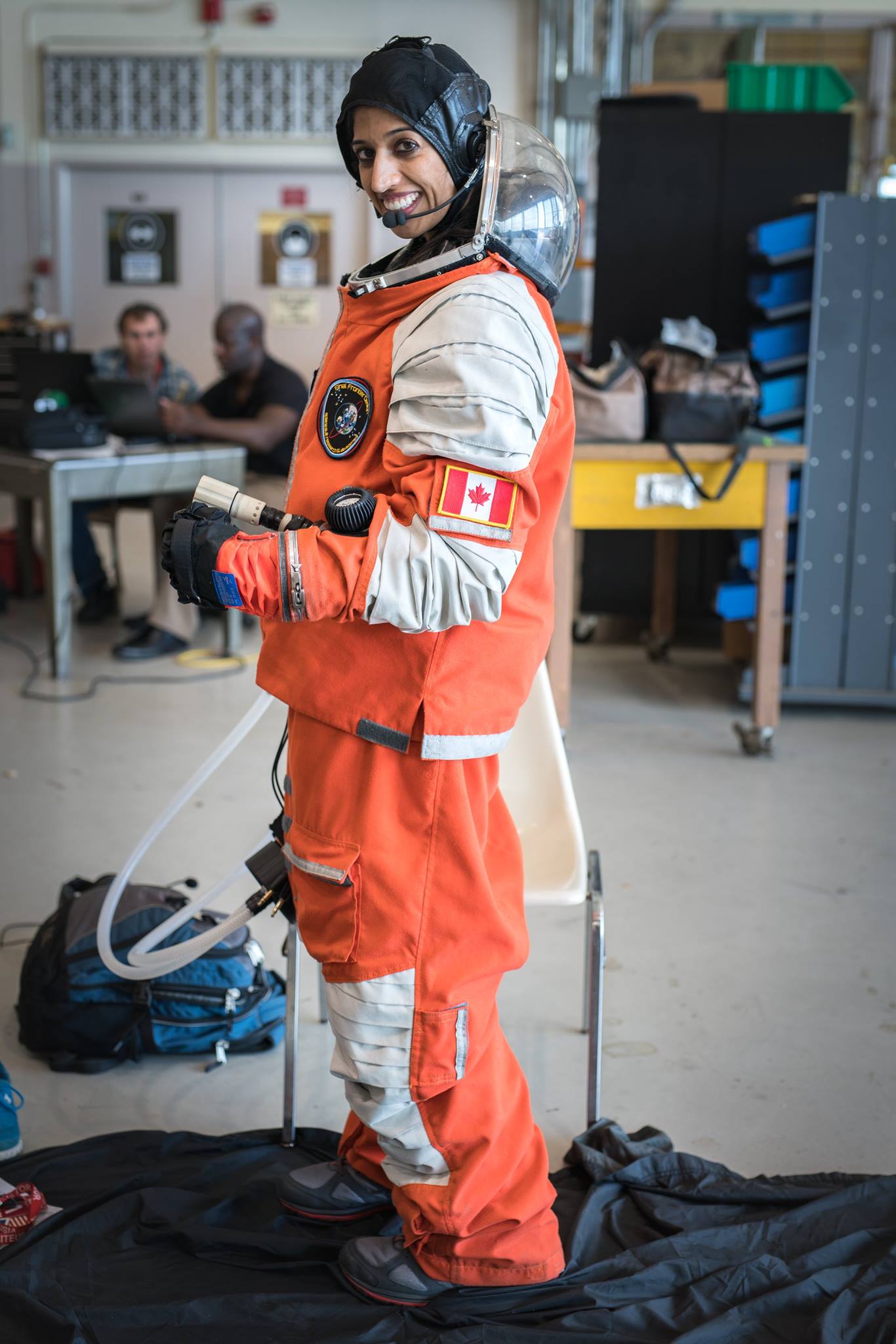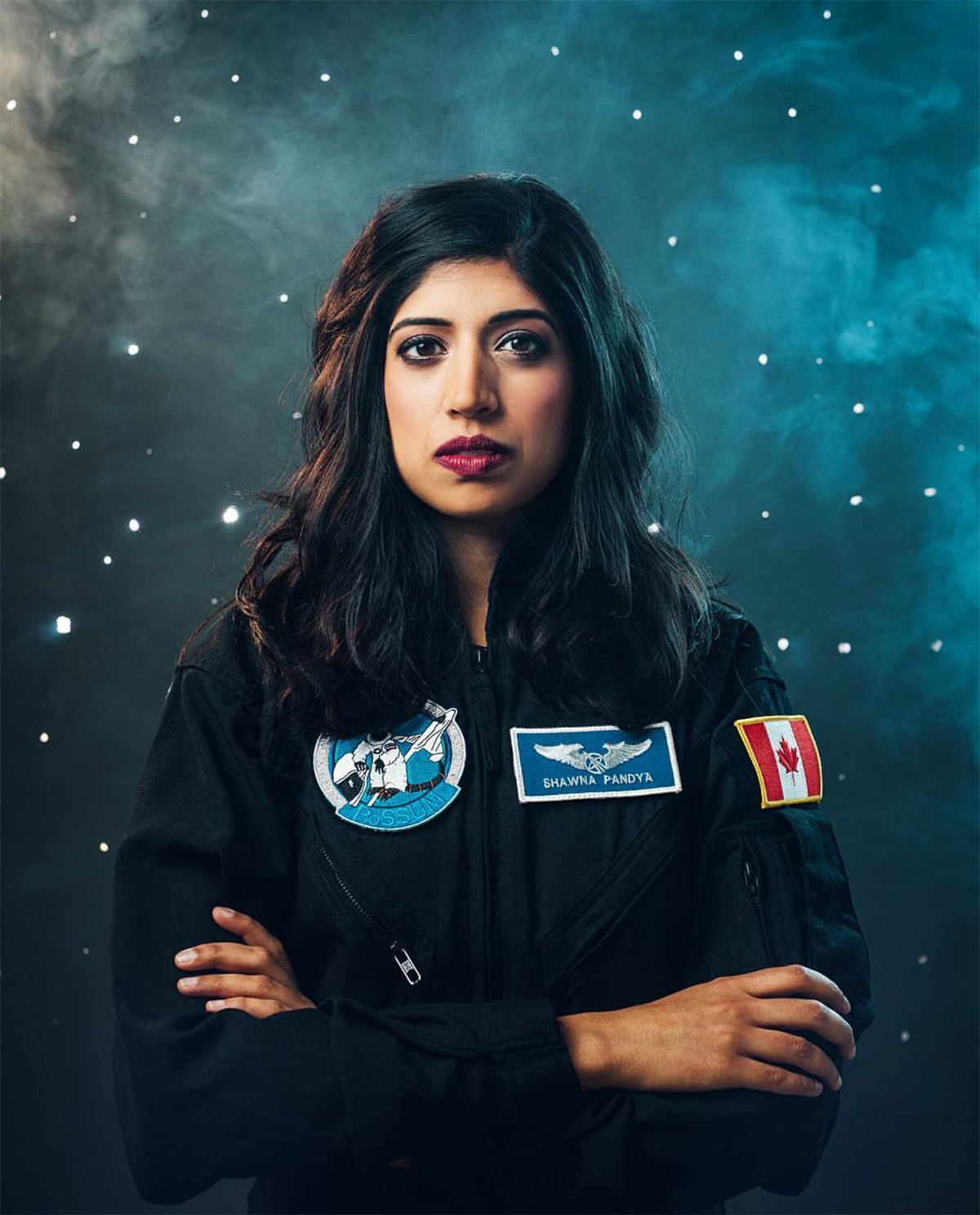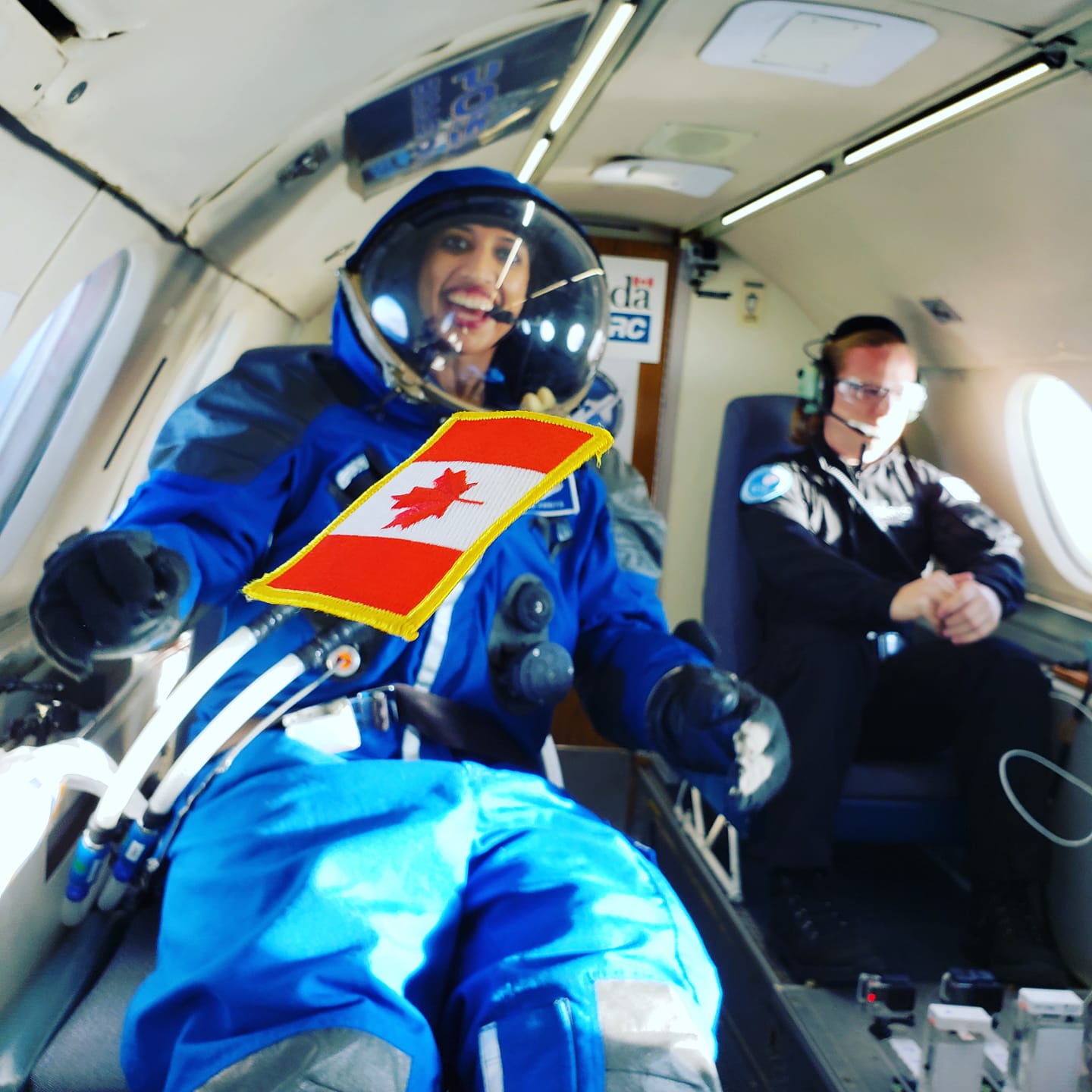with Dr. Shawna Pandya
BSc (Hons), MSc, MD, CCFP, FAWM (candidate), DMT
Physician, Astronaut Candidate, Aquanaut, Explorer, Director – IIAS Space Medicine Group
I am grateful and inspired to have interviewed a true explorer and difference-maker in our world, Dr. Shawna Pandya. Her parents immigrated from India to Canada to give their children more opportunities, and that they did! Dr. Pandya grew up in Manitoba and Alberta and was inspired at a young age when the first Canadian woman went to space: Dr. Rebecca Bondar, who has been a true role model. Our episode covered a lot of key topics around career pivots, resilience, and leadership.
Episode 58 | From Sea to Space: The Quest to Help Humanity Survive and Thrive
What is an Aquanaut?
Dr. Pandya describes how space is hard, space is expensive, and it’s trying to kill you! A key way to learn how to survive and thrive in space is by training in “space-like environments on Earth” that replicate partial gravity. The ocean is one of these, and being an aquanaut involves living under the ocean for a period of time, with 75 days being the current record. Dr. Pandya continues to be involved in these types of missions.
You went through a career pivot when you left neurosurgery and pivoted your career in a different direction. Tell us how you navigated that, and what emotions were at play?
Dr. Pandya explains how at age 15 she was determined to be a neurosurgeon. She pursued this training for three years, but it turned out not to be the path for her. There was no room for her space-related passions and activities. Through a lot of introspection, she switched to general medical practice but felt like a failure at the time. “I needed to reframe and learn from my narrative,” which over time she did. But like most of us, having doubts during a transition and dealing with fear and regret is something Dr. Pandya had to overcome. My team at Canada Career Counselling and I have helped thousands of Canadians as they pivot careers.
When you think of your own resilience, what has helped you most develop this “muscle”?
“I started learning that resiliency is not something we’re born with but something we learn to apply. [Building resiliency involves] preparing ourselves for best- and worst-case scenarios and practicing building resiliency in daily life.”
I mentioned to Dr. Pandya how from the outside looking in it may look to us like someone is confident and doing well emotionally, yet often it can look far different than what is going on inside their mind. They may be missing the forest for the trees and need more support and encouragement than they let on.
“I started learning that resiliency is not something we’re born with but something we learn to apply. [Building resiliency involves] preparing ourselves for best- and worst-case scenarios and practicing building resiliency in daily life.” Dr. Shawna Pandya
When people hear your accomplishments they likely think of you as superhuman; how would you describe the human qualities that you are most proud of?
Dr. Pandya mentions her qualities of sticktoitiveness, never giving up, working very hard, adapting, and learning to roll with the punches. “I was nicknamed “owl” as I was known to be unruffled.” She also values her sense of humour, and having fun, even on difficult missions. “I speak many languages, and sarcasm is one of them!”
You are an astronaut candidate, can you tell us more about what this means? How do you get past the stats that work against your dream (i.e. only a small percentage of qualified astronauts get accepted in a space mission)?
“I don’t even think about that end goal so much, as at any point there can be something that disqualifies or dissuades you.” Dr. Pandya notes how the path toward being an astronaut is littered with the hopes and dreams of those who are medically disqualified for reasons beyond their control: “…it’s a medical/genetic lottery in some ways. The end is not guaranteed but the journey is so incredible. If you told me as a kid that I’d get to be part of Mars simulations and command missions and live under the sea and do really cool science and technology development, I’d think that was a pretty cool dream. The journey is just as important as the end goal!”
“The journey is just as important as the end goal!” Dr. Shawna Pandya
How do you remain resilient and determined in your pursuit of going into space?
Dr. Pandya explains how it takes much grit and applying many times. “It’s making yourself a little better each time and treating failure as a learning opportunity.” It’s also about how you treat success by not resting on your laurels but saying how you will replicate the success and make it even better next time. Dr. Pandya aptly notes how this is not just true for astronauts, it’s true for life. “Success and failure is a continuum – success is not always perfect and failure can teach us a lot as well.” She reminds us to always seek to learn and grow from every outcome. According to Dr. Pandya, looking at success and failure dichotomously is not useful.
She shares a quote she loves: Success is not final, failure is not fatal, it’s the courage to go on that counts.
“It’s also about how you treat success by not resting on your laurels but saying how you will replicate the success and make it even better next time.” Dr. Shawna Pandya
What have you learned along the way about what makes a great leader?
Dr. Pandya admits she is still developing her leadership abilities. She notes how it’s important to identify your own strengths and weaknesses and understand those of others.
I especially appreciated her explanation of the “bricks and mortar model”. She describes how the leader is the mortar between the bricks. If you take out the mortar, there’s no strength in the wall, and it will fall down. A great leader is the mortar building bridges between components of their team. They must be willing to own up to their mistakes, making a plan to grow together. Being open, vulnerable and very hard-working are all critical components of leadership. “Selecting people on your team who are willing to walk through walls for you but you have to be willing to be the same for them,” Dr. Pandya explains.
If you’re out there for the glory, and just to be a brick, you’re letting your team down by not serving their needs

“The end is not guaranteed but the journey is so incredible.” Dr. Shawna Pandya
When you think of humanity’s biggest challenges, what are they from your perspective? And how do you intend to contribute towards making our world a better place?
There’s no shortage of challenges, Dr. Pandya explains. These include resource scarcity, women’s rights, minority rights, overpopulation, climate change, human trafficking, etc. There is much to solve! Picking out a piece of that puzzle and using our talents to help solve it is key. “A lot of my work is focused on mentorship. Showing people they have a voice is critical.”
What is one book and one podcast you’d recommend?
- “An Astronaut’s Guide to Life on Earth”by Chris Hadfield – it talks about mindset
- WEMcast (World Extreme Medicine Podcast) – Dr. Pandya is a host of this extreme medicine podcast. It includes harrowing stories of resilience and fortitude.
- Houston, We Have a Podcast (NASA podcast) – includes behind-the-scenes look at various aspects of space flight.
- “Another World: A Film by Land Rover” – short film on YouTube about Dr. Pandya’s work in space and medicine.
- “FIGS Scrubs: Space Navy and Mauve” – ad on YouTube, where Dr. Pandya debuted space colors.

“If you’re out there for the glory, and just to be a brick, you’re letting your team down by not serving their needs.” Dr. Shawna Pandya
If you could have one wish for a better world, what would it be?
More compassion and understanding for each other. We are quite divided these days but we’re not as different as we think.
About Dr. Shawna Pandya, BSc (Hons), MSc, MD, CFPC, DMT, FAWM (candidate), FEWM (honorary):

All images in this blog are courtesy of Dr. Shawna Pandya
Dr. Shawna Pandya is a physician, aquanaut, scientist-astronaut candidate with the International Institute for Astronautical Sciences (IIAS), skydiver, pilot-in-training, VP Immersive Medicine with Luxsonic Technologies, Associate Fellow of the Aerospace Medicine Association, and Fellow of the Explorers Club. She is Director of IIAS’ Space Medicine Group, Chief Instructor for IIAS’ Operational Space Medicine course, a host with the World Extreme Medicine’s podcast series, Primary Investigator for the Shad Canada-Blue Origin student microgravity competition, member of the AIAA ASCEND Guiding Coalition, medical advisor at Astreas and Above: Space Development Corporation, and sessional lecturer for “Technology and the Future of Medicine,” at the University of Alberta.
Dr. Pandya was on the first crew to test a commercial spacesuit in zero-gravity in 2015. She earned her aquanaut designation on the 2019 NEPTUNE (Nautical Experiments in Physiology, Technology and Underwater Exploration) mission. Her expeditions have been previously captured in the 2019 Land Rover short, ‘Another World,’ released with the Apollo 11: First Steps film, and in the 2022 FIGS Space Navy and Mauve space medicine themed campaign. She interned at ESA’s European Astronaut Center and NASA’s Johnson Space Center. Her publications include a paper on medical guidelines for commercial suborbital spaceflight, and book chapters on space technologies that have benefitted terrestrial medicine, psychological resilience in long-duration spaceflight, and reproduction and sexuality in long-duration spaceflight.
In 2021, she was granted an Honorary Fellowship in Extreme and Wilderness Medicine and named to the Canadian Women’s Executive Network’s Top 100 Most Powerful Women. Her work is permanently exhibited at the Ontario Science Center alongside Dr. Roberta Bondar, the first Canadian woman in space. In 2022, Dr. Pandya was named to the Explorers’ Club’s “50 Explorers Changing the World.”






